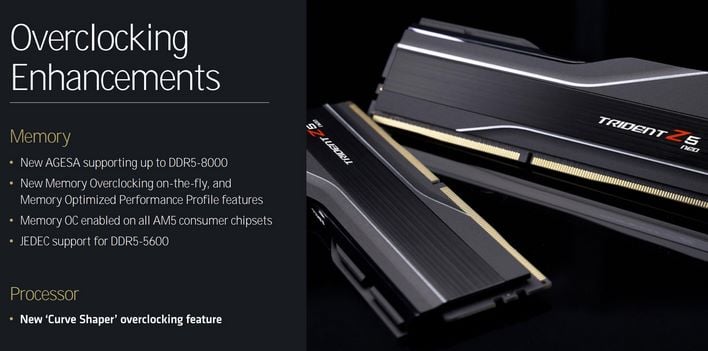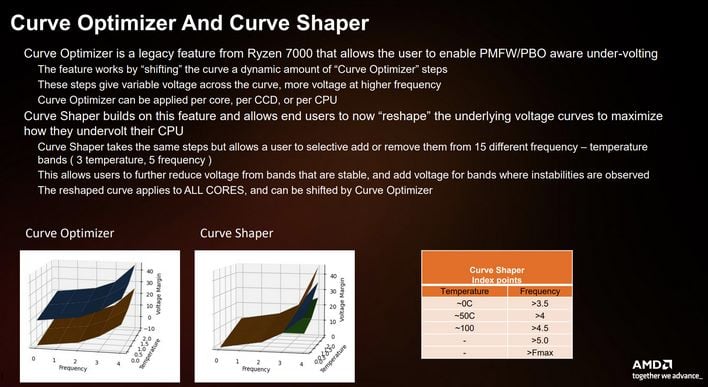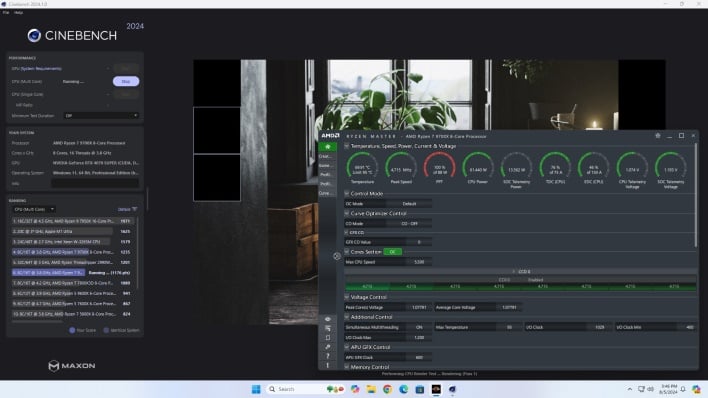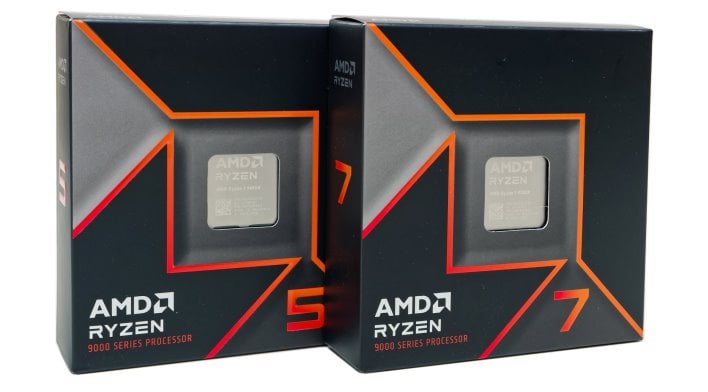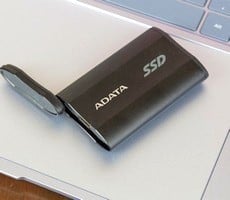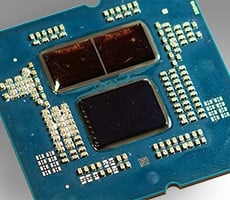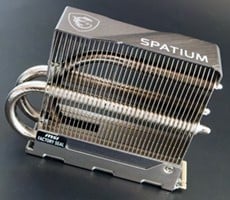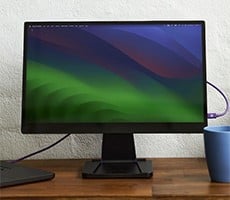Ryzen 5 9600X & Ryzen 7 9700X Review: Low Power AMD Zen 5 Impresses
Because all Ryzen 9000 series processors are unlocked — just like previous-gen Ryzen desktop processors — manual overclocking is still only a matter of altering a few multipliers, tweaking voltages, and dealing with the additional heat and power requirements. These processors can be overclocked by adjusting base clock frequencies as well, so it's possible to really fine-tune the end result if you so choose, but the quickest and easiest gains will be come by tweaking multipliers or by using one of the "one-click" options in Ryzen Master.
A new Curve Shaper feature is also coming to Ryzen Master for Ryzen 9000 series processors. Curve Shaper builds upon Curve Optimizer by giving users the ability to selectively add or subtract from 15 different points on a matrix of frequency and temperature values. By doing so, users can further reduce voltages from bands that are stable or increase voltages when needed to minimize instability at higher frequencies. The "re-shaped" voltage/frequency curve will apply to all cores, and can be shifted by Curve Optimizer.
Overclocking AMD's Ryzen 9000 Series
We took a conservative approach to overclocking the Ryzen 7 9700X (we'll get more aggressive with the 9950X), to give an approximate worst case scenario. Our results should be repeatable, assuming you’ve got similar hardware and everything is working properly. You shouldn’t need exotic cooling to pull off what we did here. We used a mainstream Corsair AIO liquid cooler with the motherboard and processor installed in a basic NZXT mid-tower, with only a pair of intake and exhaust fans. Of course, more exotic cooling and lower temperatures will result in higher stable overclocks, but hardcore cooling is not an absolute necessity to achieve some performance gains with these Ryzen 9000 series processors.To see what our particular chip could do, we tried the one-click overclocking modes available within Ryzen Master — PBO and AutoOC — and we experimented with Curve Optimizer. If you recall, PBO allows the processor to consume more power through the socket and exploit any additional current headroom available in motherboards with robust VRM configurations. AutoOC works similarly to PBO, but adds a small frequency boost override. Curve Optimizer will run through a systematic array of stability tests while experimenting with frequencies and voltages on each core, to fine tune performance for a specific CPU and motherboard combo.
Using PBO or AutoOC at stock memory speeds, we saw similar results, with modest performance improvements in some tests. Unfortunately, after experimenting with Curve Optimizer a couple of times (which should take a little over an hour on a 9700X), our test system continually hung and we couldn't get a final result. Using Curve Optimizer with overclocked RAM dialed in with EXPO should have resulted in a nicely tuned system, but time constraints prevented us from getting any worthwhile data. We will revisit this as new BIOSes and software are released for the platform.
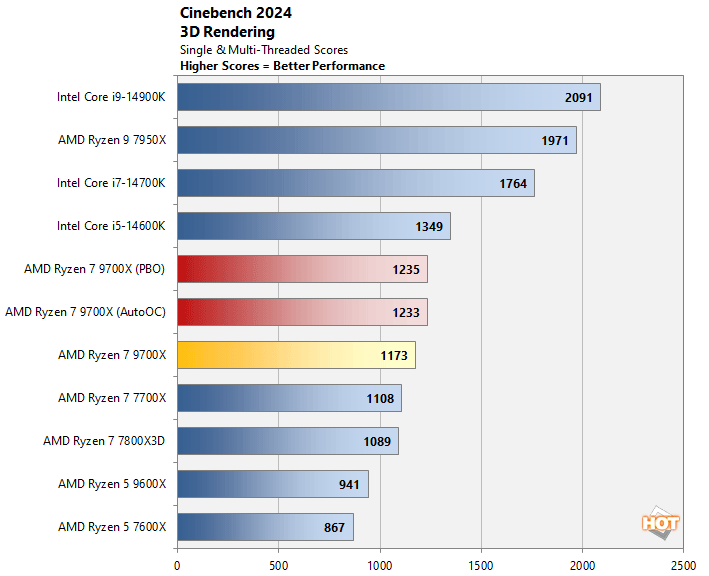
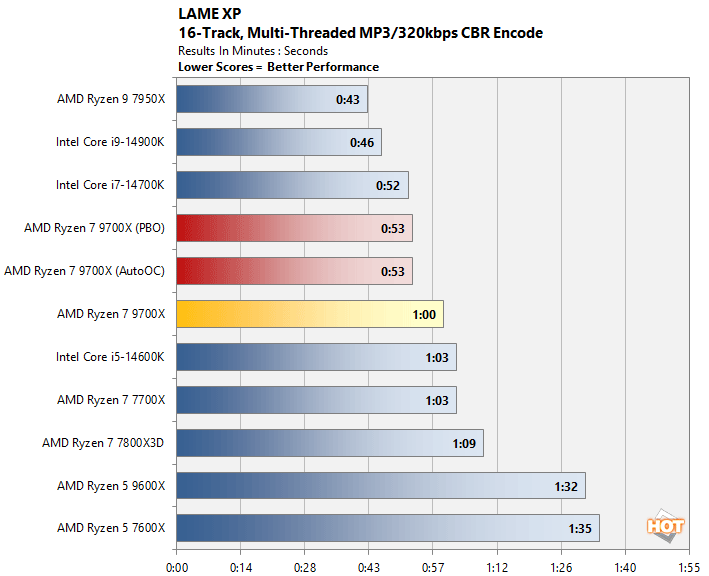
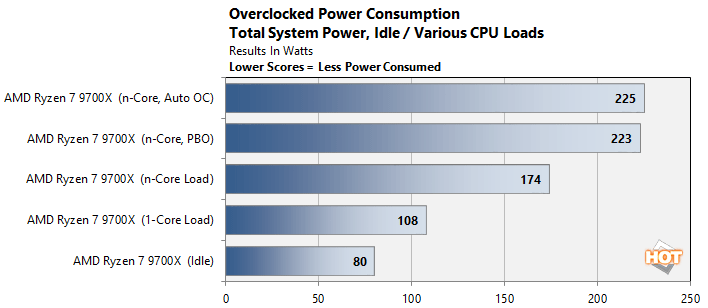
We also measured power while overclocking and saw some modest increases in peak consumption. Enabling PBO and AutoOC in Ryzen Master resulted in an approximate 50 watt increase in power consumption under a heavy multi-threaded workload. That's a significantly jump to be sure, but with total system power of about 225W, the system still consumed much less power than competing platforms.
AMD's Ryzen 9000 Series: Our Deep-Dive Review Verdict
All things considered, we are fairly impressed with these first two Zen 5-based desktop processors from AMD. In terms of their specifications, the Ryzen 5 9600X and Ryzen 7 9700X don’t seem to stand out versus their immediate predecessors. There’s marginally more cache, but core counts remain the same and base clock speeds are generally lower. But when you look back through all of the numbers, these new processors offer significantly more performance than their Ryzen 7000-series predecessors with single and lightly-threaded workloads, and they excelled with web browsing, AI, and general productivity workloads. Although the deltas were much less pronounced, the Ryzen 5 9600X and Ryzen 7 9700X also outran their predecessors in multi-threaded and gaming workloads, while a tick of a box in Ryzen Master offers a nice shot in the arm through PBO overclocking, and they handle all of this while running at low temps with some of the lowest power consumption for a modern, multi-core desktop processor.If you strictly look at how long the bar graphs are, this first Zen 5 launch salvo may appear a bit underwhelming for these midrange chips, but the fact is the Ryzen 5 9600X and Ryzen 7 9700X are clearly faster and more efficient than their predecessors, and the architecture is better-equipped for some of the most common and emerging compute workloads. We must also consider that these are only 65 watt processors, whereas their predecessors had 105 watt TDPs. With that in mind, we’re eager to see what next week’s launch of the dual-CCD, 12-core Ryzen 9 9900X and flagship 16-core Ryzen 9 9950X 120 watt and 170 watt processors will bring. With double the number of cores, and double or triple the TDPs, overall performance could be quite interesting.
We’ll have to wait a little longer for those numbers, though. For now, if you’re considering an AMD build – and the vast majority of you probably are in light of Intel’s Raptor Lake woes – Zen 5 is where it’s at. If you’re solely a gamer, the Ryzen 7 7800X3D remains hard to beat, but with lower prices and better all-around performance, AMD's new Ryzen 5 9600X and Ryzen 7 9700X are attractive options that are easy to recommend.


